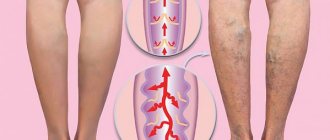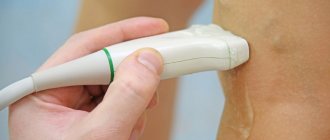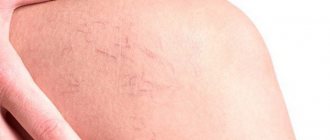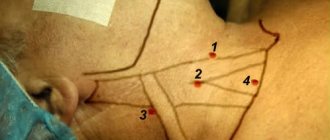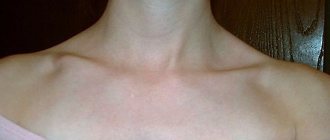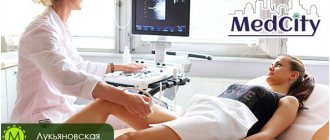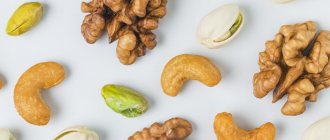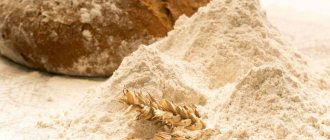The legs suffer most from varicose veins. The part of the body farthest from the heart needs a rest regime, supporting tired and weakened blood vessels. And we “exploit” our little legs until we see an expanded superficial network, swelling, painful knotty bumps, and lose sleep due to pain.
Treatment of varicose veins with folk remedies is not an alternative to medications. Because the main medicines are based on plant materials. To cure a disease, it is useful to use the accumulated experience of traditional medicine.
Required Properties
All methods used must eliminate or prevent the causes of varicose veins:
- improve the density and elasticity of the vascular wall of the veins;
- restore sagging valves;
- increase blood flow in the vessels of the legs due to blood fluidity, reducing its coagulability;
- prevent the formation of blood clots and thrombophlebitis;
- have an anti-inflammatory effect;
- To relieve local edema, the diuretic property is useful.
For use at home, you need to choose medications that:
- easy to prepare and use yourself;
- do not have a toxic effect;
- Stores well in the refrigerator;
- can be grown on a windowsill or in a country house, bought at the market;
- relatively cheap.
Treatment methods
All traditional methods of treating varicose veins are divided into general and local.
Common ones include a certain diet, baths, ingestion of infusions and decoctions. Many herbal remedies are used at the same time internally and topically.
Local application is based on the use of lotions and compresses applied to the most painful area. You need to learn how to prepare ointments.
The duration of treatment courses is suggested by doctors from a month or longer. Breaks of no more than a week are possible, replacing one product with another.
Frequently asked questions from our patients on the Internet about varicose veins of the lower extremities
Are varicose veins of the lower extremities dangerous during pregnancy? Anastasia from Belgorod is interested in:
Dear Anastasia! Varicose veins of the lower extremities during pregnancy carry certain risks of developing thromboembolic complications. Therefore, it is necessary to contact a phlebologist and follow his recommendations.
I have had varicose veins of the lower extremities for quite a long time, what surgery is best? Tamara from Ufa asks:
Dear Tamara! If you have varicose veins of the lower extremities, modern minimally invasive surgery will be optimal. The best methods today are thermoobliteration techniques (laser and radio frequency).
I was diagnosed with varicose veins of the lower extremities, how is the operation performed? Boris from St. Petersburg is interested in:
Dear Boris! You have been diagnosed with varicose veins of the lower extremities, and therefore surgery is indicated. In Russia there is no uniform approach to the choice of surgical treatment. There is a classic and outdated phlebectomy technique, with incisions and anesthesia. This operation is usually performed in public hospitals. In specialized phlebological centers, innovative techniques are used through puncture approaches (punctures). Such operations are performed on an outpatient basis, under local anesthesia, without incisions or pain.
Varicose veins of the lower extremities, what is it? Elena from Pskov is interested in:
Dear Elena! Varicose veins of the lower extremities are a chronic progressive disease, manifested by pathological dilation of venous vessels, disruption of the normal functioning of vein valves, which adversely affects blood flow. This condition often develops in people whose work and lifestyle are associated with prolonged static load.
Varicose veins of the lower extremities, what treatment is used? Natalya from Petrozavodsk is interested in:
Dear Natalia! When a diagnosis is made: varicose veins of the lower extremities, a fairly varied treatment is used. The conservative approach has many supporters, both among patients and doctors. But we must immediately clarify that treatment of varicose veins of the lower extremities cannot only be conservative. Modern treatment of varicose veins involves the use of innovative techniques that radically eliminate the pathology. You can see reviews from patients of our clinic on our website:
Diet for varicose veins
Doctors with extensive experience do not recommend starting therapy for varicose veins in the legs without a fasting diet. It must be followed for 5-7 days, regardless of the presence or absence of excess weight.
The essence of the diet: exclusion of white bread, pastries, sweets, confectionery, hot seasonings, alcohol, coffee, meat and fish dishes. Liquid is not limited. It is necessary to eat only vegetarian food: fruits and fresh juices as much as possible. Cranberries, blueberries, sea buckthorn, and figs are considered especially valuable. Two days later, rice porridge, buckwheat, fresh vegetables in a salad with vegetable oil, and young nettle soup are added.
This diet is recommended monthly for 2-3 days. People with enlarged veins in the legs are advised to completely avoid foods containing starch (bread and baked goods made from high-quality flour, boiled potatoes). You can boil potatoes in their skins and add bran to your food.
Varicose veins of the lower extremities. Causes of the disease (Wikipedia and the official approach):
There are primary and secondary varicose veins of the lower extremities. Secondary develops as a result of injuries, tumors, etc., when the venous system cannot fully perform its functions.
Occupations in which varicose veins most often develop
Primary develops due to weakness of the venous wall. Reasons that contribute to the development of varicose veins of the lower extremities:
- pregnancy;
- hormonal imbalance;
- heavy static loads;
- smoking;
- work that requires standing for long periods of time (for example, hairdressers, salespeople, waiters);
- sitting in an incorrect position, especially crossing your legs;
- high-heeled shoes;
- sedentary lifestyle.
All these factors contribute to a deterioration in the outflow of blood from the lower extremities, thereby the superficial veins become overfilled, dilate, and blood stagnation occurs. Heredity plays an important role in the development of the disease.
General treatment procedures
They have an effect on the entire body, normalize blood circulation.
Baths
Varicose veins can be treated with baths. They are contraindicated in cases of thrombophlebitis and trophic ulcers.
The contents of the bath are prepared in advance: boil half a kilo of oak, willow and chestnut branches equally for half an hour (this is best done in an enamel bucket). Then add 4 pharmaceutical packs of herbs to the solution (chamomile, string, St. John's wort) and steam overnight. Separately in the morning, boil rye bread (3 loaves), filter and pour into the bath.
The procedure should be taken before bedtime for about 40 minutes, the water temperature should be maintained at 38-40 degrees
For baths with soda, you need to dissolve a full pack per bath of water or 6-7 tablespoons per 5 liters only for the feet.
You can prepare only willow bark (two handfuls of broken twigs in a three-liter pan), boil for half an hour.
For foot baths, two to three tablespoons of dry raw materials from crushed bark are enough; dried herb is also recommended (2 packs of 50 g each).
Combinations of herbs are recommended: hazelnut leaves, birch, chamomile flowers, clover, hops, pine shoots.
After the bath, you need to do a light massage from bottom to top, put on elastic stockings and place your feet on a slight elevation.
Recommendations for internal use
Folk recipes for oral administration are very inventive. They offer one remedy or a combination, decoctions, water infusions, alcohol tinctures. The decoction is easiest to prepare in a large thermos, while maintaining all the properties of a water bath. It must be strained before use.
- Nettle is a well-known remedy for varicose veins. 2-3 tablespoons of dry leaves are placed in a half-liter thermos with boiling water. For infusion, 40 minutes is enough. You need to drink 1/3 glass an hour after eating.
- An infusion of Antonov apples - two or three small apples are poured with a liter of boiling water and wrapped for four hours. Then knead them and drink half a glass of decoction with honey on an empty stomach and at night.
- Alcohol tincture of celandine - sold in a pharmacy, it is recommended to drink 9-10 drops with a tablespoon of milk, before meals, three times a day.
- Soda solution - prepared before use (a teaspoon in a glass of warm water), it is recommended to drink in the morning and at night.
- Treatment with garlic and honey - chop 250 g of garlic, mix with 350 g of honey, leave for at least ten days. It is recommended to take a tablespoon half an hour before meals.
- Boil a decoction of a mixture of oak bark, willow branches, and chestnut for half an hour, then add chamomile, St. John's wort, and leave for 12 hours. Drink 50 ml with honey first, then 150 ml after two days.
Nettles are not difficult to find in your area
It is recommended to combine the use of herbal remedies with baths and local treatment. A course of therapy lasts two months.
Local treatment
Local means an effect only on the pathological inflamed area of the veins in the legs.
Using juices for lotions
Local procedures in the form of compresses and lotions will require preliminary preparation of the necessary solution and ointment.
- Apple cider vinegar is considered a remedy for improving vascular tone. They rub it on painful areas with dilated veins twice a day. For internal use, add two teaspoons per 250 ml of water.
- Potato juice - used to treat ulcers. The ground pulp is applied to the ulcer and bandaged, after five hours the bandage is changed.
- Cabbage leaf compresses help relieve pain and inflammation from the skin. The leaf is tied overnight.
- Hop cones - brew a tablespoon in a glass of boiling water. Lotions from the prepared medicine are applied or you are allowed to drink a glass before meals.
- Wormwood - leaves and flowers are used, they are ground to a paste, diluted with kefir and applied to areas with dilated veins.
- Tomatoes should only be used when they are sufficiently ripe. The varicose nodes are placed in slices and covered with a bandage. After 3-4 hours the compress is replaced with a new one.
Alcohol tinctures
Kalanchoe - used as an alcohol tincture for rubbing. You need to prepare the solution correctly: after cutting, leave the leaves in the cold for 5-7 days, then grind in a meat grinder, add vodka (you can use the volume as a guide, the Kalanchoe in the container should be 2 times smaller), leave in the dark for another week. After filtering, the product can be used in the treatment of varicose veins. It is suitable for long-term storage.
An alcohol tincture (2/3 of the plant material) is prepared from white acacia flowers and birch buds over the course of a week to lubricate the skin over diseased veins.
From Eastern medicine, the properties of Adam's apple are known to have a positive effect on vascular tone
Green walnuts - crush into small pieces and pour in olive oil. You need to stay in the sun for at least forty days. After which you can lubricate the affected areas.
A medicinal mixture of chamomile, St. John's wort, yarrow, calendula, oak bark and horsetail is recommended for cleansing trophic ulcers and relieving inflammation.
Horse chestnut is used both externally and internally. The leaves and flowers of the plant are used. For compresses, brew with water like tea. An alcohol tincture is prepared for internal use. Keep in a dark place for at least two weeks. Drink 30 drops before meals.
Adam's apple is the fruit of a rare maclura tree that grows in the southern regions. It should not be used internally, as the juice is poisonous. An alcohol tincture for grinding is prepared from crushed fruits. It is recommended to keep it in the dark for a month.
How to prepare ointment at home
On an ointment basis, herbal remedies stay above the affected area longer and penetrate deeper into the area better. For ointments, vegetable oils, decoction of flax seeds, lard, and chicken fat are used. A concentrated herbal decoction is added to the melted and heated base. Simmer over low heat with stirring for five minutes.
Herbal mixtures are used with ointments; they do not have to be prepared daily: eucalyptus leaves, dandelion roots, celandine grass, lemon balm, lilac flowers, clover, chamomile, calendula, fir needles. Everything is brewed in equal quantities before mixing with the ointment base.
Such ointments should be stored in the refrigerator. Apply a thick layer to the skin using light rubbing movements. Cover with compress paper and a warm bandage. It is better to apply ointment compresses at night.
Bees don't just feed us honey
How to cope with the disease?
Any conservative therapy for varicose veins is only symptomatic relief. The main effect is aimed at reducing the severity of venous stagnation and correcting complications. No conservative technique can prevent further progression of the disease and eliminate the main cause of chronic venous insufficiency.
Self-medication is dangerous!
Late visit to the doctor and self-medication for varicose veins significantly increase the likelihood of complications:
- Thrombosis of superficial and deep veins with the possible development of thromboembolism. Migrating blood clots close the arteries, which can lead to myocardial infarction, stroke, and disruption of the functioning of many organs. Pulmonary embolism is one of the most lethal conditions.
- Trophic ulcer, prone to chronicity and recurrence.
- Venous eczema is a severe protracted dermatitis with an infectious-allergic basis. It significantly worsens the quality of life and can be complicated by erysipelas.
- Spontaneous ruptures of varicose veins with risks of blood loss.
In compulsory medical insurance hospitals, varicose veins are treated surgically - the entire affected vessel and its key tributaries are removed (or completely excluded from the bloodstream). As a result, the patient eliminates pathological blood discharges, eliminates venous stagnation, and improves tissue nutrition.
Currently, patients have the opportunity to choose equally effective minimally invasive intravenous interventions instead of classical operations. These include:
- EVLO is obliteration of the affected vein (that is, irreversible closure of its lumen) after intravascular laser treatment.
- RFO – obliteration caused by exposure to radio frequency waves
- Sclerotherapy is the introduction into the lumen of a vessel of a special sclerosant drug, which provokes adhesion and subsequent obliteration of the vein.
The method of treatment is selected according to indications, taking into account the stage of varicose veins and the presence of concomitant diseases. Uncomplicated varicose veins are usually eliminated with sclerotherapy or RFO, while advanced ones can be eliminated with laser technologies. Laser treatment of varicose veins gives excellent results at any stage of the disease.
Author of the article: Zherdev Andrey Vladimirovich Last update: 09/26/2020.
Possible consequences
Folk remedies for varicose veins are far from harmless. These are concentrated extracts from plants that have strong side effects when taken orally. This especially applies to people with diseases of the stomach and pancreas. Herbs affect the acidity of gastric juice. Therefore, their use can cause exacerbation of chronic diseases of the digestive system.
It is necessary to monitor allergic manifestations (skin itching, rashes, swelling). If such symptoms occur, discontinue further use.
To use traditional methods, you need faith in the remedy and patience. Few people pay attention to the recommendation to walk in thin cotton socks through the grass dew at dawn and not take them off until your feet are dry. This charming recipe brings out the best in nature.
